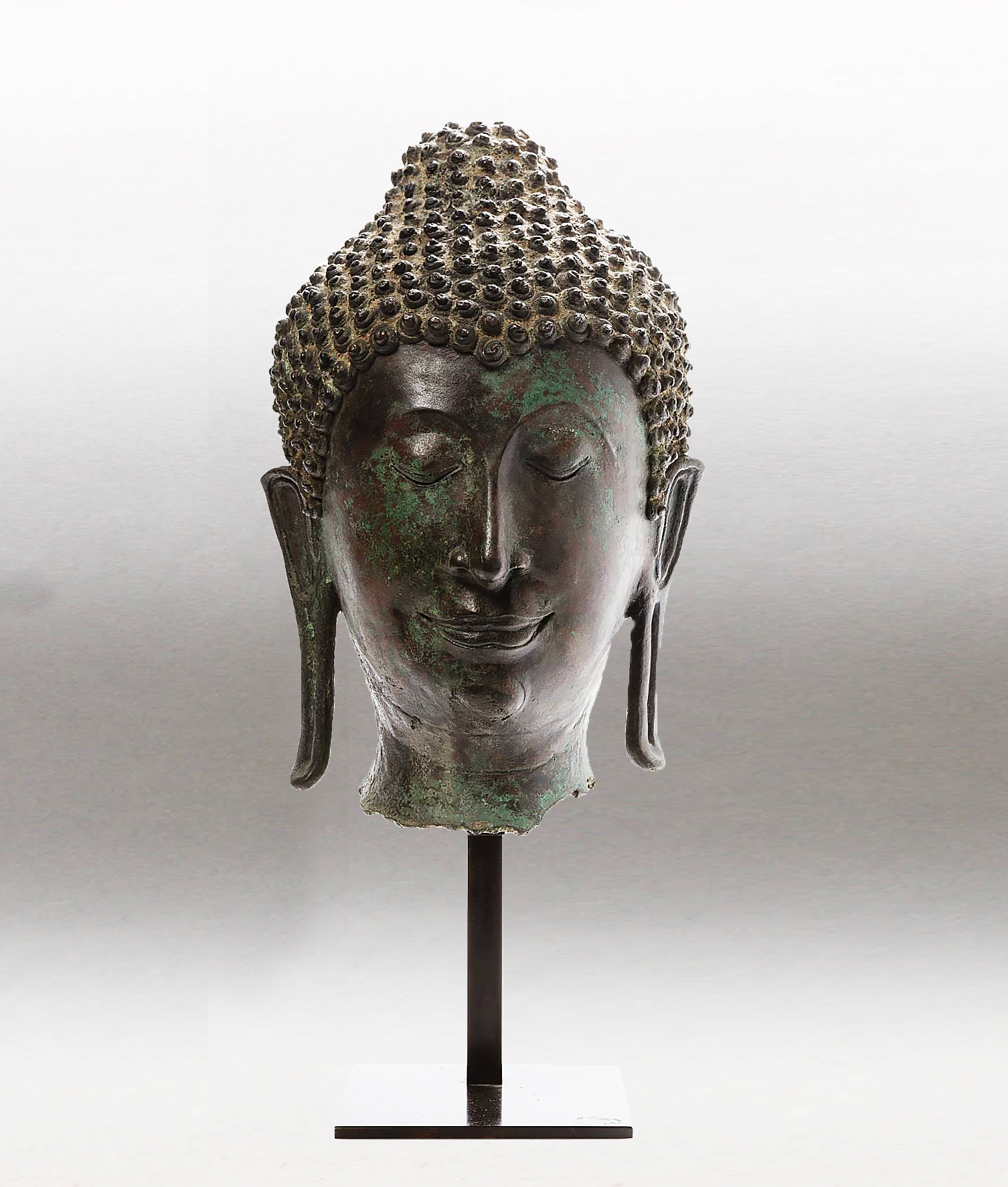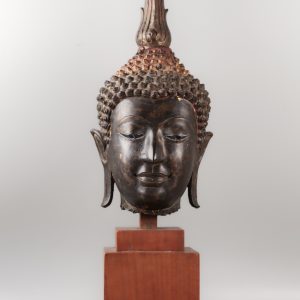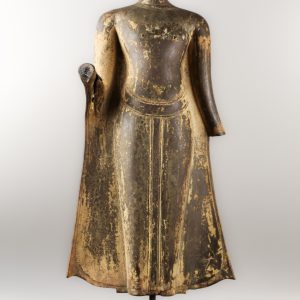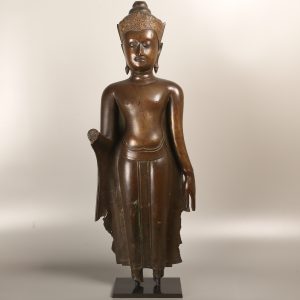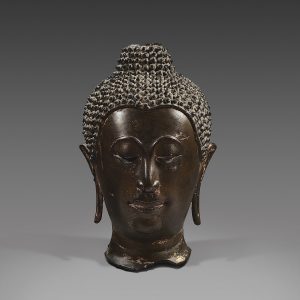Head of Buddha
18 000,00€
Bronze
Thailand
15th – 16e century, Sukhothai kingdom
H. 31cm
360° View
Description
A chiselled model
The face of this Buddha has very regular, delicately cut features. The polished bronze surface is crowned with abundant curls of hair, carefully chiselled by the sculptor. Its drooping lobes, signs of renunciation of a life of luxury and fortune, are very characteristic of Buddha iconography. The bronze hue is enhanced by emerald reflections, recalling the ancient character of the work.
A work from the powerful kingdom of Sukhothai
The kingdom of Sukhothai, located in the heart of Thailand, reached its peak during the reign of Rāma Kamheng (ca. 1279-c. 1299) and his successors. It was during this period that a new style emerged, but the most accomplished examples of which, like this head, appeared from the beginning of the 15th century. This aesthetic lasted until the end of the 19th century. This period can be described as the classical age of Thai art.
A characteristic sculpture of Thai art
This head has a very characteristic model of Sukhothai art : the well-defined oval of the face, an aquiline nose surmounted by two arched eyebrows, drooping eyelids on a serene expression, underlined by an enigmatic smile. The well-defined curls of the hair are topped by a protuberance, which is called uṣṇīṣa. The whole refers to a feeling of fullness, radiating from the figure of the Blessed One.
Provenance : Private collection, France ; Galerie Gérard Levy.

